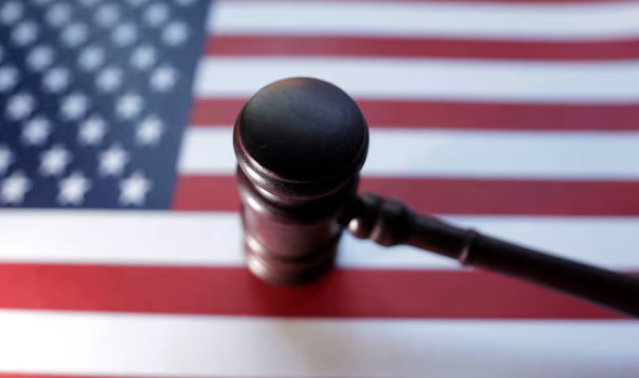Republican President-elect Donald Trump is set to build on his legacy of reshaping the federal judiciary with nominees who his supporters and critics predict could be even more conservative than the 234 judges he appointed during his first term in office.
With Republicans poised to regain control of the Senate, which must confirm judicial nominees, Trump is likely to enjoy an easier path to filling potential vacancies on the U.S. Supreme Court and the more than 100 seats expected to open up on lower courts across the nation.
“Trump remade the federal judiciary in his first term, and now he has the opportunity to cement that vision for an entire generation,” said John Collins, a professor at George Washington University Law School, in an email.
A new round of Trump-appointed, life-tenured judges will tilt the federal judiciary further to the right. These judges are likely to adopt a skeptical view of environmental, financial, and other regulations, while also supporting Trump’s agenda in the face of legal challenges.
During his first term, Trump appointed 234 judges, including three U.S. Supreme Court justices. His appointments solidified a 6-3 conservative majority on the high court. Additionally, Trump selected 54 judges for 13 intermediate appeals courts, marking the second-most judicial appointments by any president in a single term. Republican appointees now account for half of all active appellate judges and hold majorities in six circuit courts. Many of these judges maintain strong ties to the influential conservative legal group, the Federalist Society.
Many of Trump’s appointees adhere to “originalism,” a legal philosophy that interprets the U.S. Constitution based on the understanding of its text during the 18th century. This approach has shaped a series of rulings that favor conservative litigants, including cases that have curtailed abortion access, expanded gun rights, and limited government regulation.
While Trump relied heavily on Leonard Leo of the Federalist Society as his primary adviser on judicial nominees during his first term, this time he has surrounded himself with different conservative allies. One key figure is Mike Davis, founder of the conservative judicial advocacy group Article III Project. During Trump’s first term, Davis served as chief counsel for judicial nominations for Senator Chuck Grassley, the incoming chair of the Senate Judiciary Committee.
Trump’s supporters are eager for him to appoint “bold and fearless” judges. Davis, who played a pivotal role in confirming Trump-appointed Supreme Court Justices Neil Gorsuch and Brett Kavanaugh, told Reuters before the election, “I think that Trump’s biggest and most consequential accomplishment of his first term was the transformation of the federal judiciary, and I hope he builds upon that in his second term with even more bold and fearless judges.”
Davis has posted on social media platform X, saying that anyone seeking his help in securing a judicial appointment must provide “concrete evidence of your loyalty to Trump.”
Some of Trump’s first-term appointees to district courts could be strong candidates for promotion to appeals courts, which often have the final say in legal cases. These judges are key figures in shaping the judicial landscape, given that the U.S. Supreme Court hears only a fraction of appeals. For example, U.S. District Judge Aileen Cannon, appointed by Trump, dismissed the classified documents criminal case against Trump himself. Davis has cited Cannon as a prime example of the “fearless” judges Trump should appoint.
Other potential rising stars among Trump-appointed judges include U.S. District Judge Matthew Kacsmaryk from Amarillo, Texas, who suspended the approval of the abortion pill mifepristone. Although the U.S. Supreme Court overturned Kacsmaryk’s decision in June, his rulings have drawn national attention. Similarly, U.S. District Judge Kathryn Kimball Mizelle, appointed by Trump in Tampa, Florida, gained prominence after she ruled the Biden administration’s COVID-19 mask mandate for airlines and other public transportation unlawful.
Trump’s ability to further reshape the judiciary will depend on the number of vacancies he can fill. When he first took office in 2017, Trump inherited 108 federal judicial vacancies, the most for any incoming president since Bill Clinton in 1992. Today, 47 federal judicial seats remain vacant, with an additional 20 expected to open up in the near future, assuming current occupants retire as planned. However, outgoing President Joe Biden has already nominated individuals for 28 of those 67 seats.
Looking further ahead, another 247 judges will be eligible for semi-retirement over the next four years, creating new opportunities for Trump to appoint judges, according to the American Constitution Society, a progressive legal group. However, research shows that the vast majority of judges tend to time their retirement to coincide with a president from the same party. So far, Trump has appointed 116 of the current federal judges, but his influence could extend further if the vacancy rate remains high.
Even with fewer vacancies, Collins said that Trump will likely succeed in securing conservative majorities on several courts while possibly narrowing or flipping liberal majorities on others.

